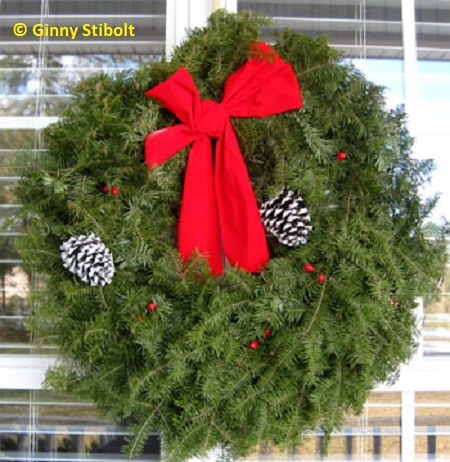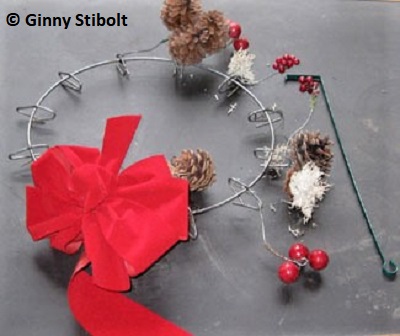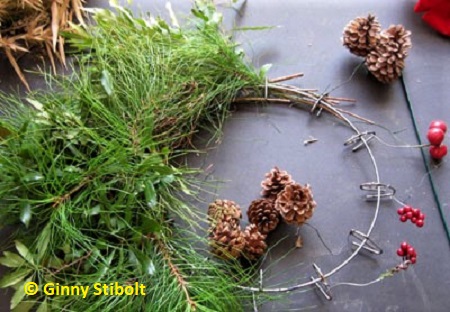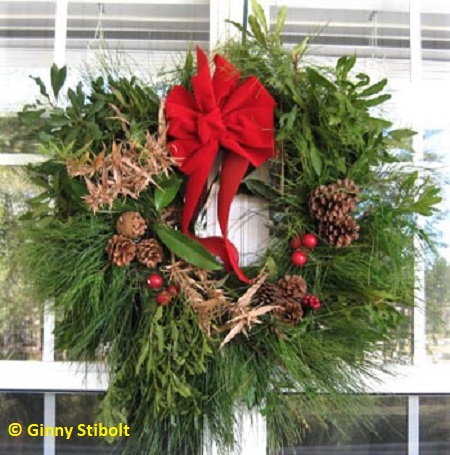Adventures of a Transplanted Gardener |
||||||
The recycled Christmas wreath
| ||||||
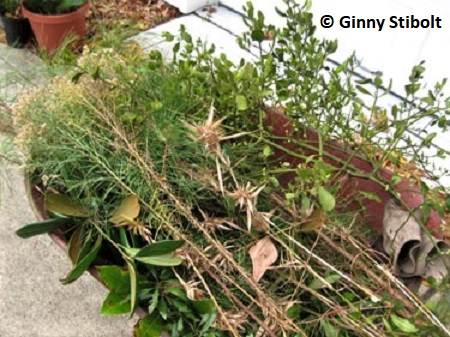 |
<< A wheelbarrow full of wreath-making materials including mistletoe(Phoradendron leucarpum), sweet bay magnolia (Magnolia virginiana), southern magnolia (M. grandiflora), wax myrtles (aka southern bayberry) (Morella cerifera), loblolly pine (Pinus taeda) both branches and seedlings, unidentified dried flowers, and several types of grass stalks. This may look like too much to populate one wreath, but I actually had to go back out and collect more pine and wax myrtle. I didn't use the mistletoe or the southern magnolia for the wreath, but they'll wind up as inside holiday decor.
I brought my collected greens into the garage, cleared off my work table, and laid out the wire wreath frame. I removed the bow and the lichen, which was totally dead and powdery after a year in the garage. I then gathered small bunches of pine and wax myrtle branches to thread through two of the openings where the bent wires attach to the frame. The branches all go in the same direction, and when I completed the circle the stems were covered as they overlapped the previous branches. I held the wreath up to the light and filled in the thin spots. After the basic greens were done, I inserted the sweet bay magnolia suckers around the inside of the wreath and stuck in several bunches of grass stalks with star-like spiky bracts. Then I bent the wires holding the pinecones and fake berries, which were still attached to the frame, on top of the greens, re-attached the bow at the top, and hung it on the window frame next to the front door. I think it looks pretty good. What do you think?
|
|
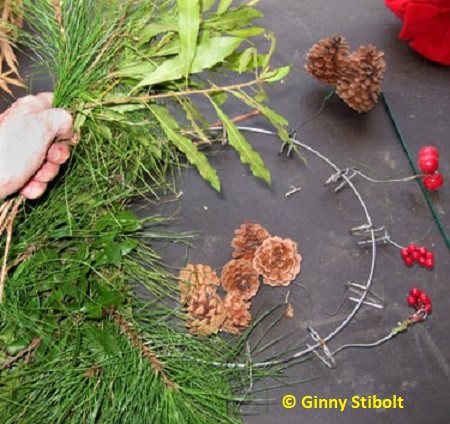 |
|
|
|
In looking at this year's wreath, I'll add some more pinecones and berries to fill it out when I recycle it next year. Actually, I think I'll dress it up this year because my recycled wreath is more interesting.
I wish you and your family a merry Christmas and a happy, greener new year.
For more information on the history of wreaths and more, see an article I wrote called, The Myths of Mistletoe and Magnolia.
Ginny Stibolt is a life-long gardener, a botanist, a naturalist, and a garden writer. You may contact her or read more of her articles posted on her website: www.greengardeningmatters.com.
Copyright Ginny Stibolt


